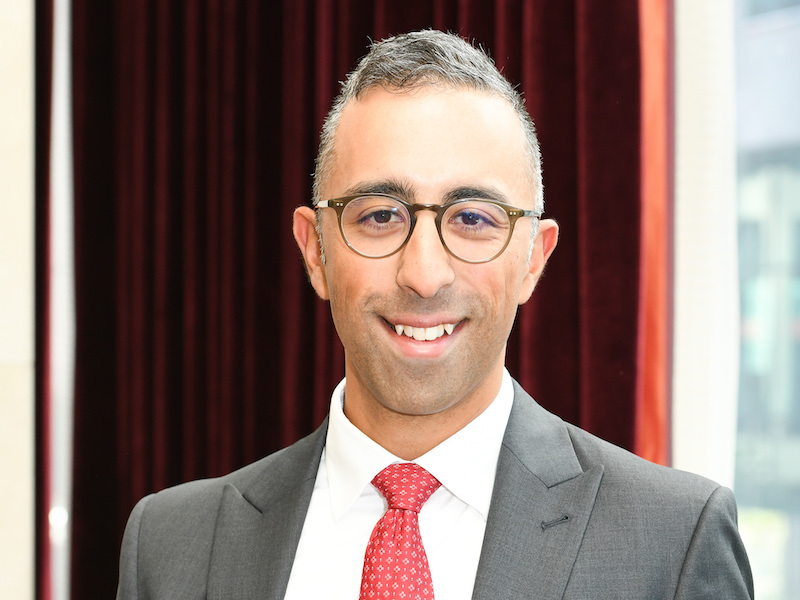

Rising interest rates and market turmoil have called into question the ability of core fixed income to provide pension plan sponsors with its traditional benefits of stable returns and income, diversification and capital preservation.
But Kevin Minas, vice-president and client portfolio manager of global fixed income at CIBC Asset Management Inc., said he actually expects these three benefits to be heightened in the coming years. “It’s been a pretty painful period in fixed income markets but . . . ultimately, the benefits of fixed income should start to reassert themselves,” he said during Benefits Canada’s 2022 Defined Contribution Investment Forum in late September.
Yields are an “excellent proxy” for future core fixed income returns, said Minas. Using a chart that compared the FTSE Canada universe bond index yields against the FTSE Canada universe bond index returns across 10 years, he demonstrated how closely returns have tracked yields, albeit on a delay and assuming no defaults. With yields reaching their highest point over the last 15 years, “future returns should be much stronger in fixed income.”
Read: 43% of global institutional investors expect fixed income performance to continue to decline: survey
Core fixed income’s diversification benefits remain intact, he added. Even as the correlation between equities, represented by the S&P TSX composite index, and bonds, represented by the FTSE Canada universe bonds, has risen slightly in the past five years, it still remains low in comparison to other asset classes. And while the most recent equity market drawdown has coincided with a hit to fixed income, the asset class has produced positives returns in the five most recent market crises.
Minas recommended that core fixed income remain an important part of investors’ portfolios, noting there’s still a “pretty big gap” between a four or five per cent fixed income return and plan sponsors’ ultimate total return target for their plan members’ portfolios. Alternative fixed income sectors and strategies can help close that gap, he added.
High yield, emerging market debt, commercial mortgages, private debt and real return bonds provide compelling opportunities to enhance retirement savings for plan members, said Minas, pointing to 5.7 yields for commercial mortgages, 6.3 per cent for emerging market investment grade corporates and 7.6 for U.S. high yield and 10.6 per cent for emerging market high-yield corporates.
“At the end of the day, these asset classes are certainly attractive for at least a return perspective.”
Read: Adding liquid alternatives to target-date funds to improve DC plan member outcomes
With the exception of emerging market debt, alternative fixed income classes tend to have a relatively low correlation to core bonds due to their geographic difference — U.S. high-yield, for example, will have higher concentrations of health care and technology companies — and thus provide strong diversification benefits, he Minas. Emerging market debt allows plan members to gain exposure to countries and companies at very different stages in their economic cycles than Canada.
But these asset classes are riskier and come with much higher credit risk than core fixed income, which plan sponsors can mitigate through smaller allocations, noted Minas. However, commercial mortgages are much more typical diversifiers, with low duration risk — particularly for those that have floating rate components to their contracts — and an extra layer of protection given the mortgage is secured by a hard asset, though they’re much more illiquid.
He recommended plan sponsors integrate alternative fixed income into a DC plans’ default investment options, given the high degree of financial literacy necessary for plan members to be able to understand the risks and benefits and determine an appropriate asset allocation. This could be in the form of a core plus or absolute return credit strategy.
Read: Inflation driving interest in alternative fixed income: white paper
Core plus marries defensive, domestic exposure to core fixed income, usually of between 60 and 80 per cent, with out-of-benchmark exposures to alternative fixed income, said Minas. Comparing the FTSE universe bond index, the median active core universe manager and a core plus universe manager, he noted core plus came out with a superior 10-year annualized return of 2.33 per cent, compared to 2.13 per cent for active core and 1.72 per cent for the index.
Core plus is a direct substitute for a passive or active core strategy, said Minas, noting absolute return credit functions differently, as more of a “core satellite approach,” untethered from a benchmark and with a strong bias toward corporate credit — although he added some strategies do allow for an allocation to government bonds. This strategy could see a more defensive tilt toward investment-grade corporates, but also tend to include strategies like leveraged credit, long-short credit and tail hedging.
Read more coverage of the 2022 DC Investment Forum.
